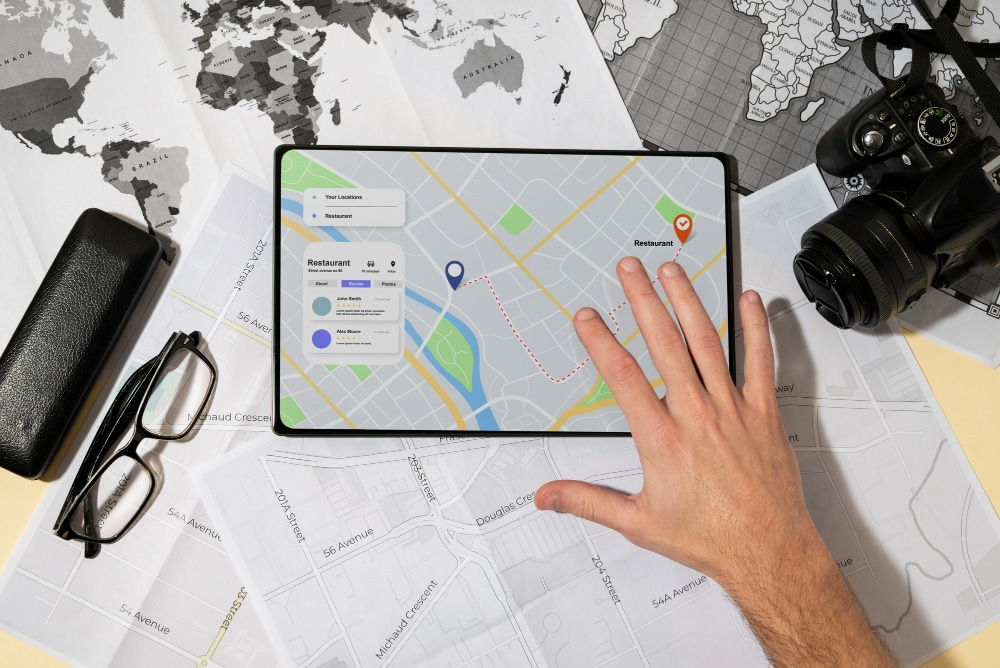Efficient logistics operations are crucial for businesses to stay competitive. From managing deliveries to optimizing routes, every aspect of the supply chain plays a vital role in ensuring customer satisfaction and cost-effectiveness.
However, with challenges like traffic congestion, dynamic route changes, and fuel efficiency concerns, logistics companies need robust solutions to streamline their operations.
Enter Bing Maps – a comprehensive mapping service provided by Microsoft that offers a plethora of features tailored to meet the needs of logistics professionals. This blog post will explore how integrating Bing Maps into business logistics can maximize efficiency and drive success.
| Optimize Your Deliveries Before They Fall Through the Cracks Get real-time updates, optimize routes, and improve operational efficiency with Detrack Sign Up to Detrack |
What is Bing Maps?
Bing Maps is a web mapping service provided by Microsoft. It offers various functionalities such as route planning, satellite imagery, street maps, 3D mapping, and local business search.
Users can explore maps, get directions, view traffic conditions, and even overlay additional data layers for specific needs like weather or real-time transit information. Bing Maps competes with other mapping services like Google Maps and Apple Maps.
Challenges in Route Planning and Navigation
Route planning and navigation present several challenges, including:
- Traffic Congestion and Delays: Real-time traffic data is crucial for identifying congested areas and choosing the most efficient routes to avoid delays.
- Dynamic Route Changes: Unexpected events like accidents or road closures require the navigation system to recalculate routes to minimize travel time dynamically.
- Accurate Time Estimation: Providing accurate arrival time predictions is challenging due to traffic, weather, and road conditions. Systems need to update predictions continuously based on changing circumstances.
- Multi-Stop Route Planning: Optimizing multiple-stop routes involves complex algorithms to determine the most efficient sequence and minimize overall travel time and distance.
- Fuel Efficiency: Optimal route planning should consider fuel consumption, vehicle characteristics, and environmental concerns to promote fuel-efficient driving.
- Driver Safety: Navigation systems should prioritize safe driving practices by avoiding hazardous routes, providing timely warnings about potential dangers, and promoting compliance with traffic regulations.

Top Features of Bing Maps for Efficient Driving Directions
Bing Maps offers several features designed to provide efficient driving directions:
- Real-Time Traffic Updates: Bing Maps incorporates live traffic data to provide users with up-to-date information on traffic conditions, allowing them to choose the fastest routes and avoid congestion.
- Route Optimization: Users can optimize their routes to minimize travel time and distance, considering traffic congestion, road closures, and multiple stops.
- Street-Level Imagery: Street-level imagery lets users view detailed images of roads and surroundings, helping them better visualize their routes and easily navigate unfamiliar areas.
- Voice-Guided Navigation: Bing Maps offers voice-guided turn-by-turn navigation, enabling drivers to keep their eyes on the road while receiving spoken directions to their destination.
- Customizable Routes: Users can customize their routes based on preferences, such as avoiding toll roads, highways, or certain types of terrain.
- Integration Capabilities: Bing Maps can integrate with other services and platforms, allowing users to access additional features like local business information, reviews, and ratings.
- Multiple Transportation Modes: In addition to driving directions, Bing Maps supports other transportation modes, such as walking, biking, and public transit, providing users with comprehensive route options.
- Location Sharing and Tracking: Users can share their location with others and track the real-time movements of friends or family members, making coordinating meetups or monitoring loved ones’ journeys easier.
Integrating Bing Maps into Business Logistics
Integrating Bing Maps into business logistics, whether with a specific platform like Detrack or in general, can provide several benefits:
Complementing Existing Features
Bing Maps can complement existing logistics platforms like Detrack by offering additional features such as more detailed street-level imagery or alternative route planning algorithms.
For example, while Detrack may provide basic routing functionality, Bing Maps can enhance it with real-time traffic updates, dynamic route changes, and customizable routing options based on specific business needs.
Expanding Geographic Coverage
By integrating Bing Maps, logistics companies can expand their geographic coverage and provide services in areas where their existing mapping solutions may lack detailed information or accuracy.
Bing Maps offers extensive global coverage and regularly updates its mapping data, ensuring logistics companies can operate efficiently across various regions and terrains.
Enhanced User Experience
Integrating Bing Maps can significantly enhance the user experience for logistics companies and their customers.
With voice-guided navigation, live traffic updates, and interactive mapping tools, users can enjoy a more intuitive and seamless experience when planning routes, tracking shipments, and managing logistics operations.
Backup or Supplementary Tool
Bing Maps can be a backup or supplementary tool for logistics companies, providing an alternative mapping solution in case of downtime or technical issues with their primary mapping platform.
Having redundancy built into the logistics infrastructure ensures operations continuity and minimizes service delivery disruptions.

Use Bing Maps for Driving Directions
In conclusion, leveraging Bing Maps for driving directions can significantly enhance the efficiency and effectiveness of logistics operations. With real-time traffic updates, customizable route planning, and extensive geographic coverage, Bing Maps provides a robust solution for optimizing delivery routes and navigating various terrains and conditions.
Moreover, integrating Bing Maps with platforms like Detrack can offer complementary features that further streamline logistics processes. Detrack, with its focus on delivery tracking and proof of delivery, can seamlessly integrate Bing Maps’ advanced routing capabilities to provide accurate and efficient navigation for drivers.
By combining Detrack’s features, such as electronic proof of delivery and route optimization, with Bing Maps’ detailed street-level imagery and dynamic route changes, logistics companies can ensure timely deliveries, improve customer satisfaction, and enhance overall operational efficiency.
| Optimize Your Deliveries Before They Fall Through the Cracks Get real-time updates, optimize routes, and improve operational efficiency with Detrack Sign Up to Detrack |










